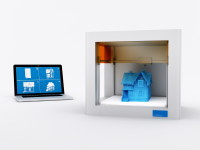Categories
- Additional Insured
- ChildrensProducts
- Claims Made
- Cyber Insurance
- Dietary Supplements and Nutraceuticals
- Ecigarettes
- Firearms Insurance
- Food Products
- Foreign Products Liability
- Foreseeable Misuse
- Frivolous Lawsuits
- General Liability
- Industrial
- Infographics
- Intellectual Property
- Looking ahead
- Marijuana Liability
- Medical Products
- Mutual Indemnification
- Nano Technology
- News
- Online Sellers Insurance Requirements
- Outsourcing
- Piercing The Corporate Veil
- Pollution Liability
- Product liability
- Product Recall
- Retail Chain Store
- Start-Up Business
- Statute of Repose
- Surplus Lines Insurance
- Technology
Product Liability and 3D Printing

Changes are inevitable in product liability laws and standards
Some time ago I addressed several interesting points in “3D Printers Will Change the World as We Know It.” At the time, the biggest risk being predicted was whether manufacturers would be able protect intellectual property rights from those access to a 3D printer could replicate their product.
Well, more concerns and potential issues surrounding 3D manufacturing and product liability have cropped up since then. 3D printing allows for new processes in manufacturing, which could possibly expose businesses to unanticipated liabilities. At the heart of the matter is consumer behavior.
Foreseeable misuse
Up until now, most product liability laws state that manufactures are only liable for product defects in design, manufacturing, or warnings for the product’s intended use. But 3D printing opens the door wide for products to be modified or misused, forcing manufacturers to grapple with foreseeable misuse.
Manufacturers are already responsible for foreseeable misuses of their products, even if used in way not originally intended. But what if consumers use 3D printing to designs that make a once safe product dangerous?
Will manufacturers have to predict how consumers may modify the original design and have to revise the product warnings to prevent consumer injuries? In the future, will manufactures have to put restrictions on what can be produced by 3D printing? There are not currently any examples of such cases, but they’re likely not far down the road.
Software Liability
Product liability case rulings concerning software and information are based on whether the information or software is a product. Most are not, so strict liability rarely applies.
Embedded software is what drives 3D printers, but they also use software to produce or print each specific product. Obviously the printer itself can malfunction due to a software glitch and produce defective products for which the manufacturer is liable. But will courts look at the developers of embedded software as service providers or as manufacturers/suppliers of components in 3D manufacturing?
So far, the courts haven’t needed to wrestle with that, but they will. Software is an intangible product. 3D printing cases will force the courts to re-examine their stance of not holding users liable. There are two ways this will impact businesses:
- Companies creating and distributing the designs for 3D-printed products will be subject to the same product liability standards and laws that pertain to products.
- Companies will find it much more difficult to claim that their information or software is exempt from the product liability standards and laws that apply to products.
Shifting Risk Contractually
Disclaimers, indemnity clauses and insurance requirements are ways in which companies transfer the risk of liability to other parties. These insulations from liability will become even more important when managing new risks in the world of 3D manufacturing. Of course, those with whom they do business will find ways to push back.
3D printing is creating new and exciting opportunities for the development and customization of products. But businesses need to take into account potential product liability issues that are sure to follow.
Source: Andy Crowder and Alex Fenner. “What You Need to Know About 3-D Printing and Product Liability.” industryweek.com. 19 April 2017.
-
 Click the Button Below to Get Your
Click the Button Below to Get Your
No-Obligation Quotes from Among the
Top 18 Leading Insurance Carriers Today -
Recent Industry News
- Amazon Sellers and Vendors Strategy Including Insurance Requirements
- Walmart Sellers Insurance
- Product Liability Limit Requirements of Online Sellers
- State-by-State Product Liability Analysis of Laws Impacting Businesses
- Children’s Product Liability: Strange Claims and Need for Insurance
- Product Liability vs. Environmental Insurance for the Chemical Industry
- Product Liability in the 3D Printing Industry: New Materials and Their Significance
- Product Liability Concerns in Agricultural Equipment Enhanced with Artificial Intelligence
- Navigate Product Liability in Battery and Solar Industry
- Cyber Risk Insurance Is Essential Business Insurance in Today’s Modern World
Monthly News Archives
